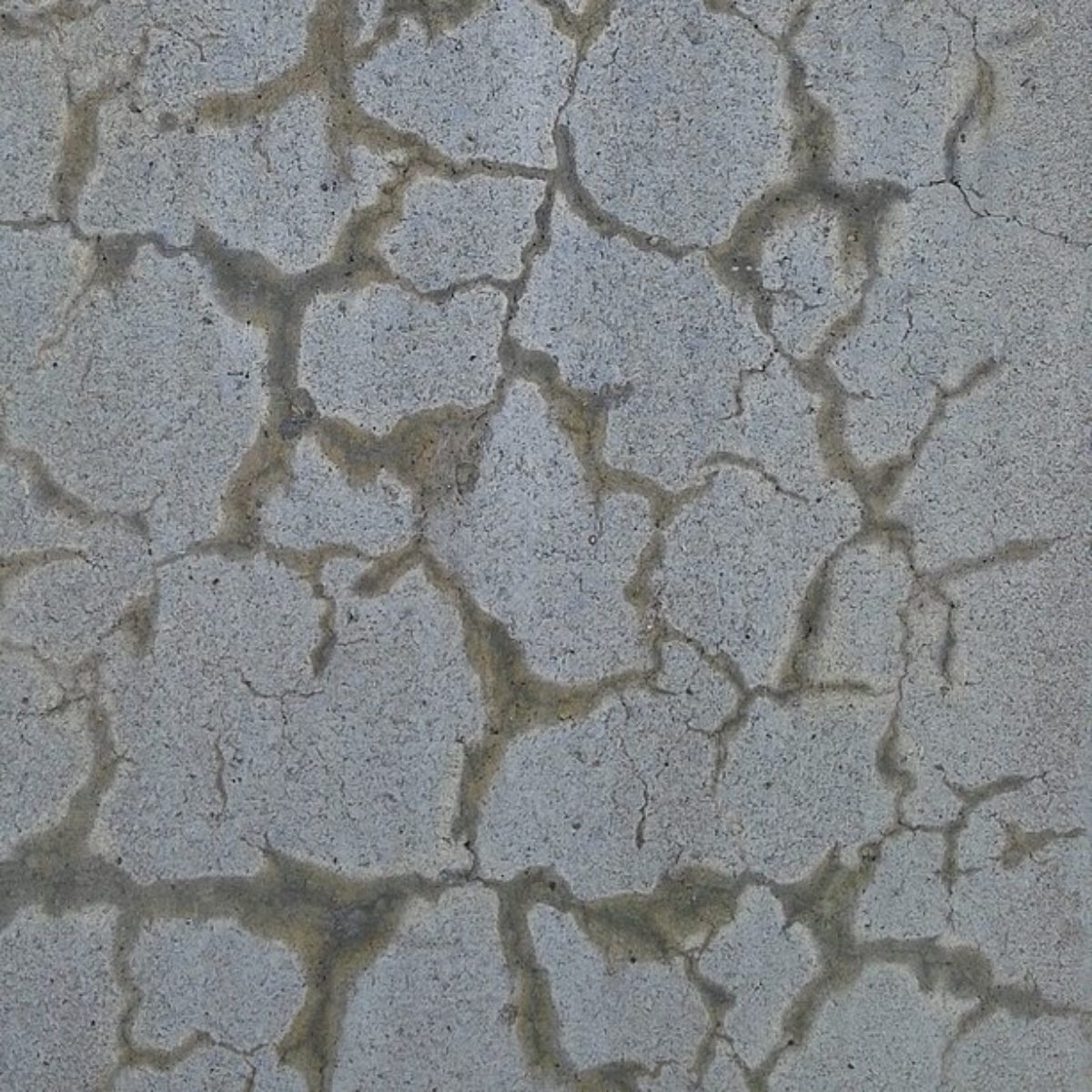
Surface of a concrete pillar presenting the typical crack pattern of the alkali-silica reaction (ASR). Source: Wikimedia.
Results may contribute to a better understanding of the chemical reaction that causes the degradation of concrete structures
Concrete is the most used material in construction and, consequently, one of the most consumed materials by humankind. It can be part of virtually every type of construction, from homes to large infrastructures such as bridges and dams. The strength and durability of concrete depend on the proportion of its constituents: Portland cement, sand, gravel and water.
Cement is a fine powder produced from limestone and clay that, with addition of water, becomes a binder paste that hardens through a series of complex chemical reactions. After hardening, the concrete retains its structure even if it comes back in contact with water. Over time, however, concrete can be degraded by many physical and chemical factors.
The alkali-silica reaction (ASR), also known as “concrete cancer”, is a chemical reaction between silica present in aggregates and alkaline hydroxides formed from cement constituents. The product of this reaction is a hygroscopic gel that expands in the presence of water, generating mechanical stress and widespread cracking.
Consequently, concrete structures in direct contact with water such as dams, pipelines, foundations, bridges and marine structures are most susceptible to the occurrence of ASR. This type of structure is considered ‘special’ and ‘highly complex’ in the field of civil engineering due to its constructive peculiarities and high cost. In extreme cases, damaged structures may even be condemned.
The occurrence of this reaction in new constructions can be mitigated through several complementary measures, such as limiting the alkali content in cement and reactive silica in the aggregate. However, once the alkali-silica reaction begins, there are no known effective methods to stop it. Despite studies done so far, little is known about the atomic structure of the gel produced in the reaction. Hence, investigating this structure on a nanometric scale should contribute to the understanding of the phenomenon.
In this context, R.J. Prado et al. [1] sought to obtain information about the atomic structure of the gel produced by ASR in order to support a better understanding of the reaction, the atomic structure and expansion mechanism of the gel produced, as well as the future development of methods for the recovery of previously affected concrete structures.
The researchers collected gel samples from the gallery walls of a dam located in the state of Minas Gerais, Brazil, which has cracks caused by ASR. Additionally, to reproduce the reaction effects under laboratory conditions, typical aggregates used in the concrete were also chemically attacked with a solution rich in potassium hydroxide ($ \rm KOH $).
The group used the SXS and XAFS2 beamlines at the Brazilian Synchrotron Light Laboratory (LNLS) and obtained information on the average local atomic structure (first and second neighbors) around potassium ($\rm K$) and silicon atoms ($\rm Si $) from the gel produced by ASR.
This information was obtained through the technique called X-ray Absorption Fine Structure (XAFS). The technique consists in analyzing the diffusion of photoelectrons generated by different chemical elements as a function of X-ray incidence. By selecting different energy ranges of incident X-rays, it is possible to select which chemical element will emit photoelectrons and, consequently, study in isolation the local atomic structure around the atoms of this element.
According to the researchers, the use of the XAFS technique was fundamental for this study, as it enables data to be obtained from a highly disordered structure, such as the ASR gel. The results show that the structure of the ASR gel is much more complex, and quite different, than the most accepted structural models predicted.
The average atomic structure around the potassium atoms in the ASR gel showed a signal compatible with the existence of $ \rm KO_n $ interconnected polyhedra. The average atomic structure around the silicon atoms showed a signal compatible with the existence of a defective structure formed by interconnected tetrahedra of $ \rm SiO_4 $. However, it was not possible to identify potassium atoms as second neighbors of $\rm Si$, nor silicon atoms as second neighbors of $\rm K $ atoms. Experimental data thus indicate that the ASR gel is chemically inhomogeneous and formed by $\rm KO_n$ polyhedra nanoclusters and $\rm SiO_4$ tetrahedra nanoclusters.
Source: [1] R.J. Prado, F. Tiecher, N.P. Hasparyk, D.C.C. Dal Molin, Structural characterization of alkali-silica reaction gel: An x-ray absorption fine structure study, Cement and Concrete Research, 123 (2019) 105774. DOI: 10.1016/j.cemconres.2019.05.019.
Research investigates the concentration of chemical elements in commercial species
Research investigates the addition of niobium to catalysts to improve alternative fuels